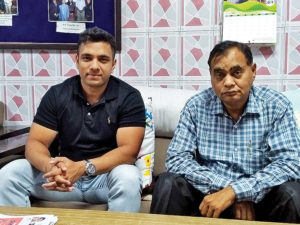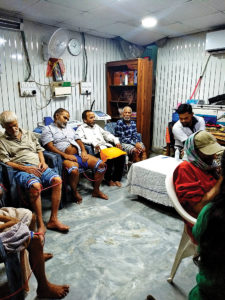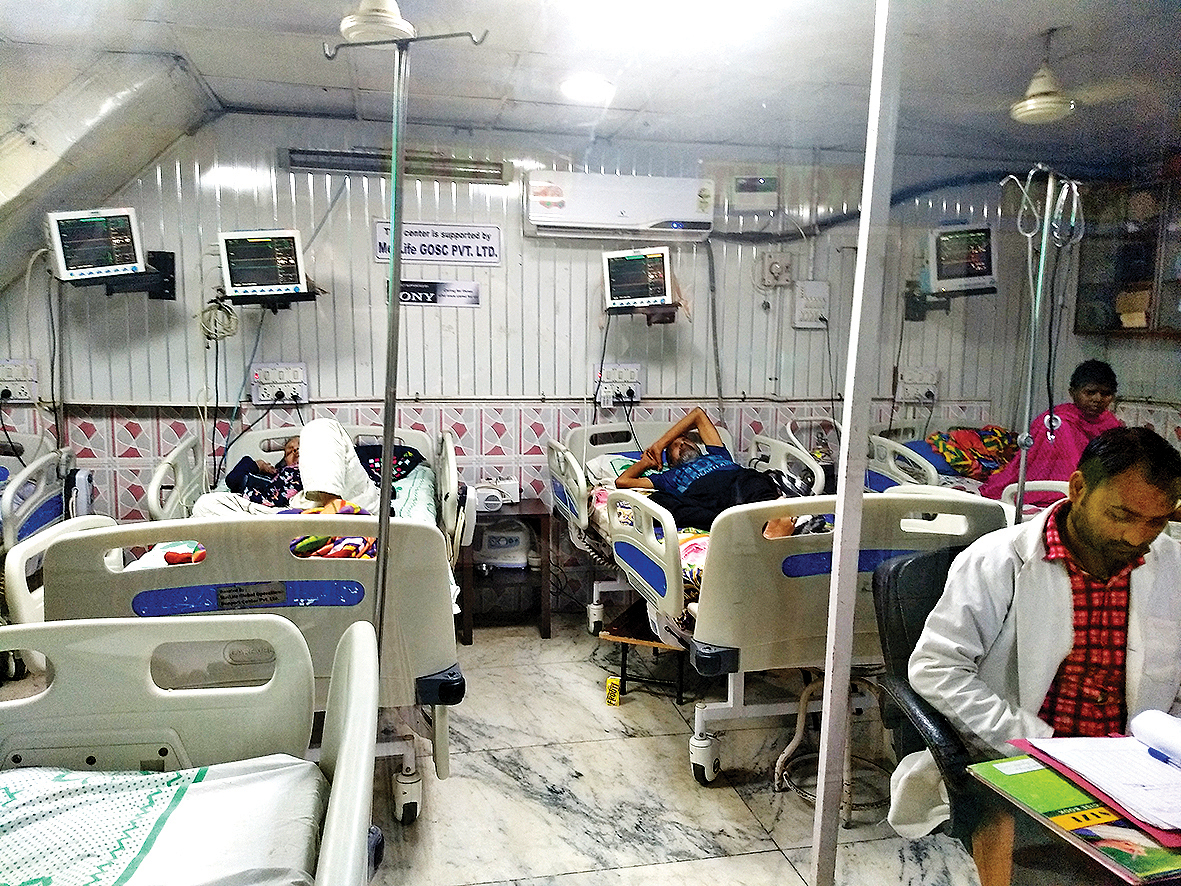Guru Vishram Vridh Ashram, is the only NGO of its kind that rescues senior citizens wandering on the streets and takes them in for treatment and rehabilitation. Patriot speaks with the men behind this establishment
“What’s the point in doing social work for the elderly? They are no longer of use to the economy!” is one of the many thoughtless questions Dr GP Bhagat had to answer when he established Guru Vishram Vridh Ashram, which he now runs with his son Saurabh Bhagat. “These people have no shelter, no food, and no place to go,” he adds gravely.
A stroll through the Ashram gives the impression of a hostel set-up. In a narrow lane in Gautampuri, the inside of the small compound looks worlds different from the dingy and slightly smelly bylane it is situated in. Rooms stacked with medicines and syringes, a tiny gift shop, medical care units with residents occupying every single bed, and a physiotherapy room for good measure, are just some of the facilities that are being offered to distressed mentally and physically disabled senior citizens.
The old age home has now been up and running for the 16 years, and has managed to rescue 4,000 senior citizens within the last 14 years. What sets GVVA apart is that it is not a paid facility, where elderly people pay for the services, medical or otherwise. At the Ashram, they send out a van every night of the week, on rescue missions.

The van covers a different route every day, equipped with a driver, two caregivers one male and one female, circling the streets from 7:30 pm to 4:00 am. Picking up old stragglers or abandoned senior citizens. Dr. Bhagat started the Ashram in 2003, and for the last five years, his son has joined in to help with the operations.
Moreover, they see to the complete rehabilitation of elderly citizens. From medical attention to following up on their health check-ups, round-the-clock care-givers, trained doctors, state-of-the-art medical equipment, and a biofuel kitchen.
Bhagat explains the entire process of how a senior citizen ends up at their doorstep. “Initially, it was based only on word of mouth. I would get calls, and personally go to the location to pick up the abandoned men and women,” he says. “The tragedy is, with an increase in population, the number of old people in the country will also increase, and I don’t think the people of the country are prepared for that responsibility.”
People from other places in the country came to Delhi in search of job opportunities. And according to Bhagat, they got so busy trying provide for their family that they missed out on much of a social life. “In old age, children are abandoning their old parents because they become inconvenient to care for,” he simplifies. He goes on to say that most people working in jobs requiring mental exertion end up with some degree of dementia or Alzheimer’s in their old age.
Most of the people, an approximate 40 per cent, that are rescued from the streets and brought to GVVA belong to this category. Parents or relatives of children who have not only abandoned their older family members but have also stopped providing for them. Being the only one of its kind, Guru Vishram Vridh Ashram has connections with the police, who send in such individuals who turn up at the police stations, straight to the gates of GVVA.
Saurabh Bhagat divulges a few hotspots where senior citizens are commonly found hiding, sleeping or roaming aimlessly. Temples are very common spaces for old people to resort to, and the temples in Connaught Place and Kalkaji often turn out to be useful to the rescue team. The metro stations are also a common place where lost senior citizens are found (they are put on a train and simply abandoned), the ISBT Kashmere Gate, and the old and New Delhi Railway stations.
The father-son duo estimates that if 16 years ago they were rescuing 20 people a year, that number had multiplied to about 500 people a year now. So clearly, the issue of distressed, and homeless senior citizens is truly a matter that is increasing in magnitude.
The Ashram has a systematic procedure in place for nursing the senior citizens when they come in. Some of them have been victims of abject poverty while others have damaged lungs or kidneys. When they come in, they are kept overnight in a medical room, where their medical check-ups are run. Based on the results the checkup yields, the men and women are either moved to the living quarters or one of the two special care units which take care of serious illnesses. The Special Care Units have a total of ten beds between them, each equipped with monitors, and beds, and ample medical supplies. A fully up-to-date pathology lab runs all the tests on the residents.
The pathlab is important to maintain in top condition because, “When these aged people come in, they do not come with their past medical records. We have to determine their conditions here, through the blood tests we take, before we can administer medical attention. So we give a lot of importance to maintain our pathology lab.”
The people resting in the physiotherapy room looked particularly pleased and comfortable, while the rest outside were enjoying the first of their daily massage sessions. The cooks were getting ready for lunch, the steam and smell from the kitchen emanating deliciously to the outside corridor.
Most importantly however, all of these senior citizens, splayed across beds and mattresses, no longer look dejected. They look comfortable, and even a little hopeful, as they lounge around in clean clothes and greet us as we walk by.

Dr. Bhagat spends every night at the Ashram, sleeping on the premises along with the rest of the senior citizens. He has away been passionate about the conditions of abandoned senior citizens, and says his inspiration came from his own father, who is nearing 100 years. “We lived in Varanasi, and all the people in our neighbourhood always came to my parents to ask for help. And they never turned a single person away.”
“The value system in our country is getting demolished, and children are letting their parents go for the sake of convenience,” explains Saurabh Bhagat, who is currently acting as director at his father’s establishment. He goes on to stress that people are not realising that this is a problem with very futuristic implications. “At the rate with which we are moving in terms of population, those abandoning senior citizens today do not realise that in a few years they might face the same fate. And given our facilities are already overflowing, the prospects are not looking very bright.”





